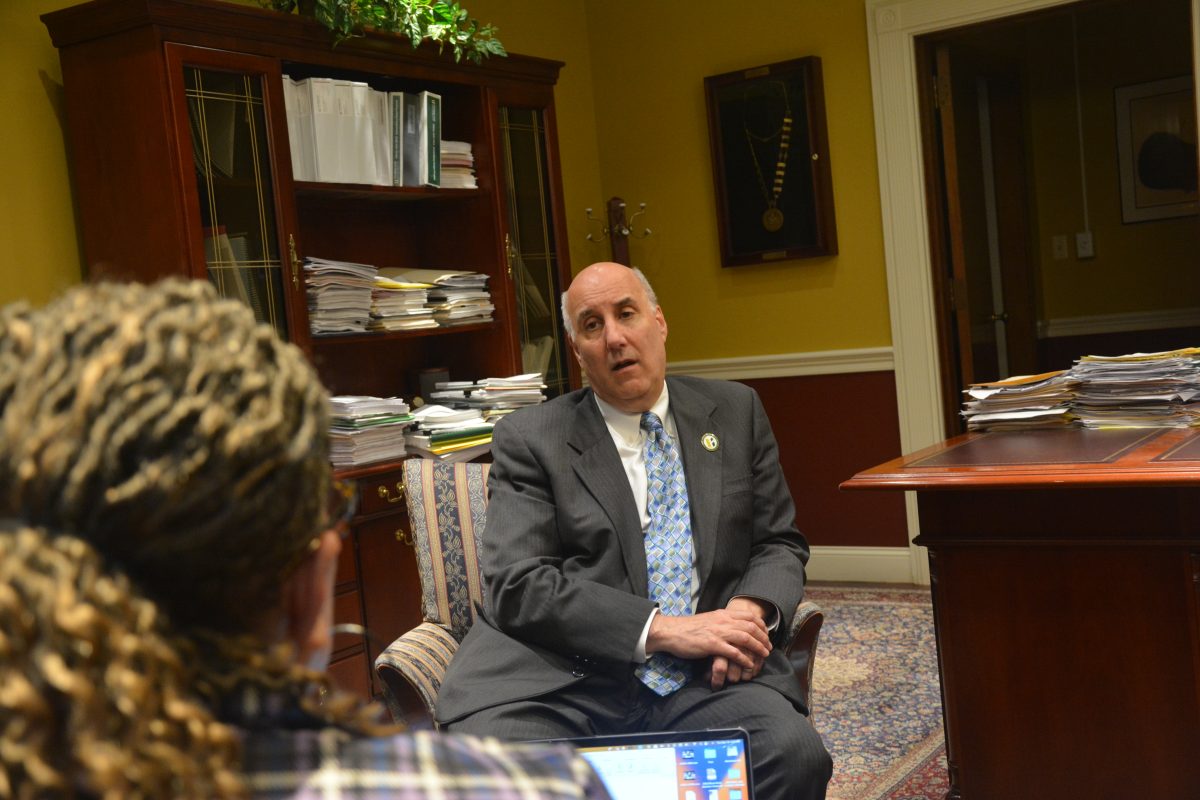by Christopher Webber
 One thing that is never debated over in this world is that everyone hates deadlines. Businesses big and small have been expressing this hate due to implementing payment terminals that accept new chip-infused credit cards by Oct. 1. This is a big upgrade for credit card users and the businesses, but what are the implications of making this switch mandatory and having it be such a finite point on the calendar? This date given by major credit card companies has only passed a week ago, and since many businesses have not yet made the upgrade or are still in the process of implementing it, what’s the effect? How are they handling the switch?
One thing that is never debated over in this world is that everyone hates deadlines. Businesses big and small have been expressing this hate due to implementing payment terminals that accept new chip-infused credit cards by Oct. 1. This is a big upgrade for credit card users and the businesses, but what are the implications of making this switch mandatory and having it be such a finite point on the calendar? This date given by major credit card companies has only passed a week ago, and since many businesses have not yet made the upgrade or are still in the process of implementing it, what’s the effect? How are they handling the switch?
Business Administration professor Michael Greenwood from Fitchburg State University believes that there would be issues regarding this game of catch-up that the United States is playing with the rest of the world. According to https://www.creditcardinsider.com countries around the world such as Europe, Asia, Canada, Latin America and the Caribbean have all been actively using chip cards since 2013. “I think the biggest issue would be the cost of implementation,” Greenwood said. Businesses spend a lot of money staying relevant and modern in the form of interior store design, advertising and products. The mandatory upgrade they now have to make to their payment systems is another expense that they have to deal with. Payment terminals are not cheap. Chip card swipe terminals can cost up to $600, according to https://www.bluepay.com. Corporations like Target and Walmart have to upgrade every single store that they own across the country. This also poses a problem for small businesses where they may have to spend way more than they are willing to in efforts to avoid issues that credit card companies such as MasterCard and Visa say they will have to incur if fraud happens on outdated terminals and cards.
Not only will businesses have to deal with the initial costs of this upgrade, but they could face a decrease in the rate of sales due to the time of transactions increasing. “The time for card transactions are going to build up, with each transaction being 5 to 10 seconds. It’s going to be costly,” said Greenwood. Others issues include the learning curve card owners will have to experience in making card payments by “dipping” their card into the bottom of payment terminals and having to input a unique PIN number given to them by their credit card company. It doesn’t seem like a drastic step away from having to swipe your card or having to input PIN numbers in various cases, but adding another number to an already large list could cause confusion.
Given these issues that businesses could face, and might already be facing, what does this mean for the consumer? By Oct. 1, only about 40 percent of American credit-card holders have received their new chip cards, according to USA today. In either case, whether you have made the switch to the new chip card or not, your experience at the store will not change much, according to Visa. “Chip cards are not only more secure, they are also simple to use. Chip cards and terminals work together to protect in-store payments. A unique one-time code is generated behind-the-scenes that is needed for the transaction to be approved – a feature that is virtually impossible to replicate in a counterfeit card,” says Visa. Included in this change in the method of completing a transaction is the peace of mind you receive knowing you will be better secured from fraudulent activity. For those who have not upgraded, your experience does not change at all. You may have to wait a bit longer for those with the chip cards to finish their transactions or for them to get used to the experience, but that will be the only difference. This blending of payment methods might become chaotic for businesses, but the customers with chip cards will be more secure when it comes to the potential for fraud to occur. “It’s going to be the wild, Wild West,” Greenwood said.

February 16, 2024
February 16, 2024

February 16, 2024

February 16, 2024
Trending Stories
Chips and Dip Anyone?
November 10, 2015
Leave a Comment
More to Discover














